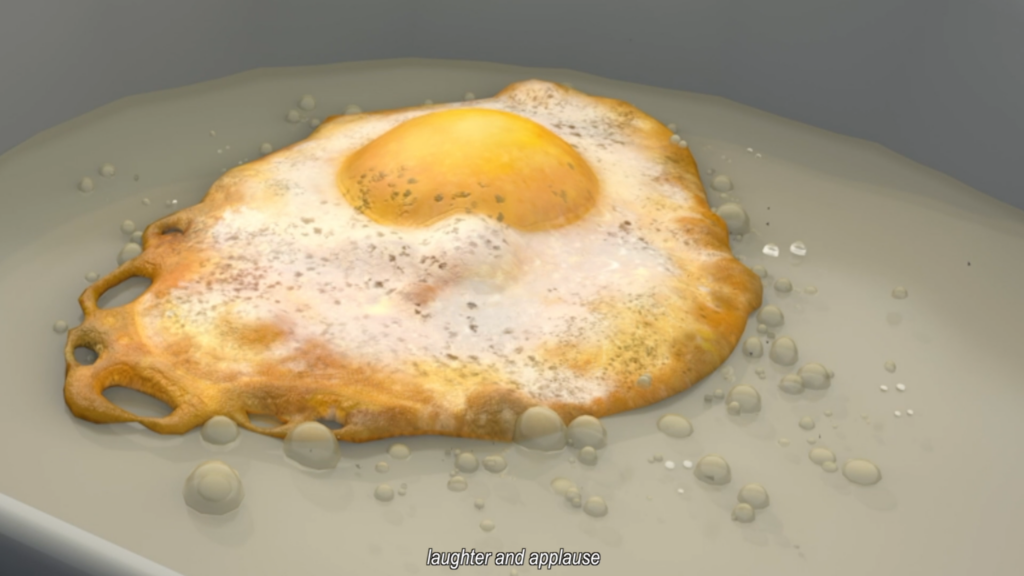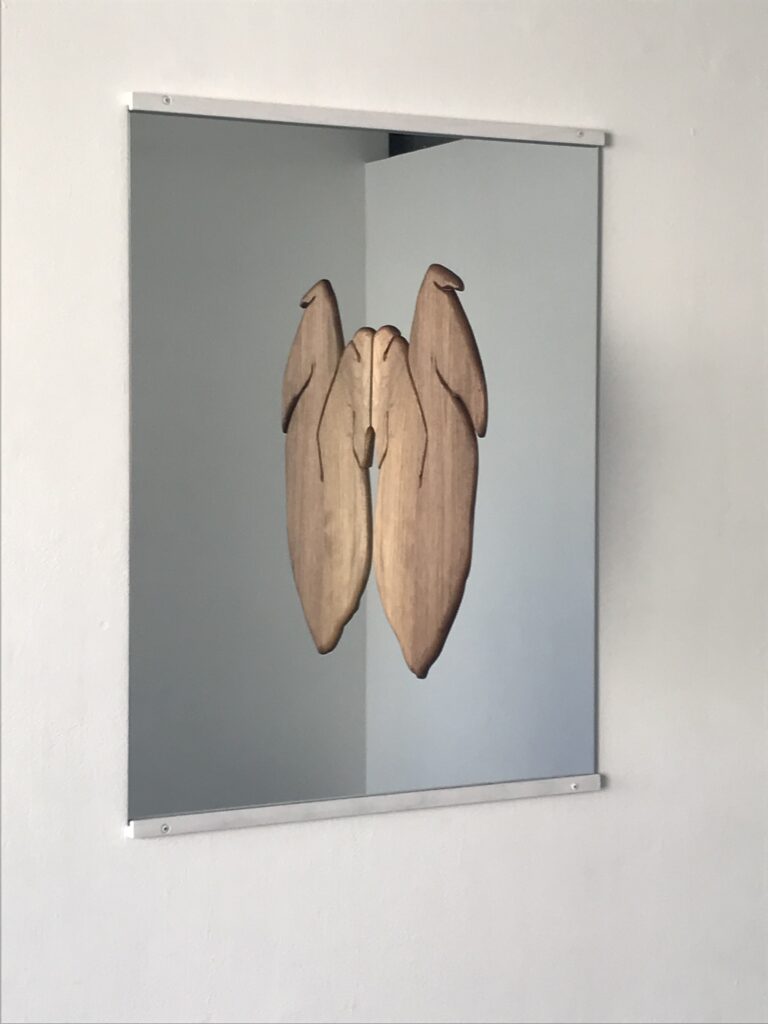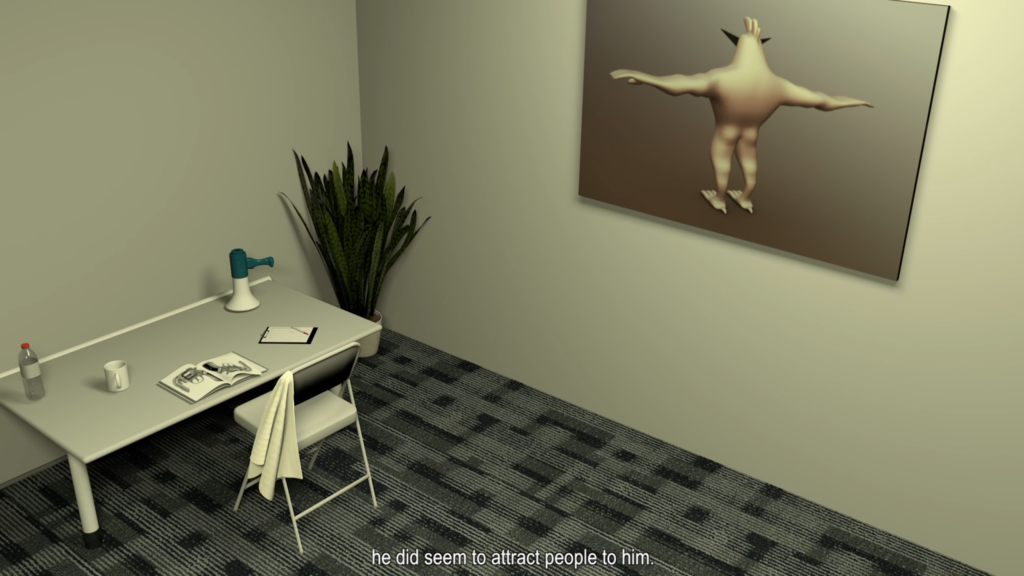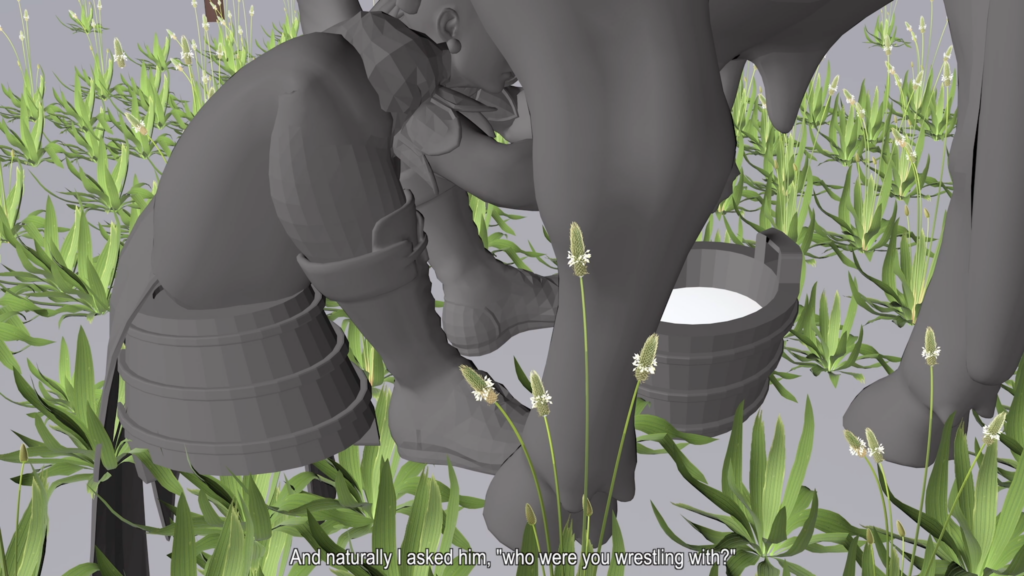Galleries: BLINDSIDE (Melbourne)
Exhibitions: Alex Hobba, Cockfighter's Ghost

There is something threatening about having a wide range of interests. Information aesthetics seem poised to overwhelm you with junk. Organising quickly becomes a profession and a chore, the logics of advertising and marketing simultaneously grow more obvious and more oblique. Advertising as a discipline is predicated on good storytelling and the ability to use all tactics at your disposal to construct a persuasive, believable pitch. Arguably the most important indicator of good storytelling is the ability to hold your target’s attention.
Alex Hobba is extremely conscious of the storytelling tactics that might be employed to sift through or somehow structure the noise. Cockfighter’s Ghost at BLINDSIDE sees Hobba continuing to push her longstanding interest in modes of ambivalent storytelling through the plasticity of cinematic forms. More specifically, Hobba presents the template of the documentary as something which can be played with, inverted and unstuck, inflecting this logic throughout the exhibition.

Cockfighter’s Ghost is an ambitious presentation, a successful emulation of the documentary form, and the artist injects her trademark sense of humour into her worldbuilding. This world is one which seeks to extend Hobba’s conceptual research avenues into a more specific locale which the audience might find more familiar (and thus accessible). In this context, she drives her conceptual impulses, which include examining the extractive industries of factory farming and professional wrestling, through the central conceit of a biographical documentary about a fictional chicken. Raised in obscurity, through angelic intervention the chicken grows up to be a cockfighting star.
The exhibition centres on a video essay rendered by the artist in 3D animation software. Organised around this ficto-documentary, Hobba extends beyond the screen into sculptural forms within the gallery space. Laser-cut wooden objects function as references to the heavyweight champ, mounted perpendicularly in the centre of rectangular mirrors. A wooden wing doubles, a trophy becomes whole. Made complete through an optical effect playing between light and vision, the work hinges on the construction of her central character’s accomplishments, highlighting that in some way, his persona relies on being reproduced or amplified by a cohort of admiring fans. It also gestures towards the aspirational nature of success (I could be the champ, too).

In a wider context, documentaries market a sense of authenticity around their subjects, supported by the presentation of voices positioned to hold authority in relation to that being discussed. ‘The Price of Glee’ investigates whether the scripted musical comedy-drama cursed its cast while ‘Bama Rush’ focuses on the trials and tribulations of those rushing Phi Mu. Both documentaries market to their audience an experience of closeness, taking full advantage of the desire for a heightened parasocial experience. Both flirt with controversy and are derided by their subjects. Sensationalism leaks in as a narrative device ambivalent to the humanity of those being discussed. In Cockfighter’s Ghost, sensationalism is employed by the artist alongside a litany of other video-textual strategies to mimic and comment on this phenomenon. Admittedly, Hobba’s interest in the persona of the Cock lies in what the character can do as a device for organising her thoughts rather than just as a biographical study. He is a vehicle for allowing the audience entry to a deeper consideration of how we are told stories and how we respond.
Hobba’s admission that the Cock is merely an organisational device underscores a key interest in ambiguity, both in her material choices and as it relates to a broader search for a ‘truthful’ account. The slipperiness of the central figure is made obvious by her decision to largely present the Cock as physically absent. The film narrates the Cock’s life through those close to him, structured in short, confessional scenes which mimic the invisible interview format common to documentary storytelling. The interviewer’s questions are almost completely removed from the edit. The effect of this conversational architecture highlights an unspoken covenant while heightening the ghostlike presence of its central subject.
In a documentary these staged scenes would often be interspersed with archival footage from talk shows or live performances. Mapping across from this template, the only scene in Cockfighter’s Ghost in which we hear both sides of the conversation are during the talk show set, which is the location for an absent interview between host and Cock. These scenes are identifiable by a shimmering golden tone, distinct from the other ways Hobba treats her backgrounds, which are often more naturalistic. Through this golden sequence (Hobba’s version of sepia), the Cock reveals skills in hypnosis while discussing the perils of fame, wealth, and success.
Throughout the rest of the film, Hobba fleshes out an account of the Cock’s life. In addition to the talk show host, we hear from his wetnurse in the farm (though cocks aren’t born that way), his miniature personal chef (frying an egg), and Charlotte (from the web). The set dressing for each scene points towards the fact that Hobba has chosen each character to play an archetypal role, and a typical setting assists us in following what otherwise could be a more indeterminate trail towards comprehension.
In many ways, the material choices Hobba makes are ambivalent towards the idea of an easy comprehension. While the use of easily recognisable archetypes aids digestion, some choices she makes heighten the ambiguity that arises from this search for a ‘true’ account. The absence of the Cock points towards his ectoplasmic status (the documentary fixation on ghosts), while a major unresolved point of contention is the idea that his fights are all rigged in his favour (the documentary fixation on legitimacy). Ultimately, the assertion is made that in the minds of a fanatic, whether or not the fighter secures victory legitimately is irrelevant.
Some choices which enhance the ambiguity of the work feel slightly more unintentional. A few captions sit slightly askew, and the obscure nature of the speaker in some scenes might perhaps benefit from additional voice acting to provide greater consistency throughout. But fans of cult classics know that flawlessness isn’t everything - an imperfect work might be endlessly discussed whereas a perfect thing is ignored. It feels more significant, or at least more interesting, that while playing with the space between truth and fiction, Hobba chooses to resist over-glossifying her rendered environment, or tidying up all the edges. There’s enough sheen in the reflective gloss of the mirrors and the contours of the laser-cut wood in the real world.

It’s a refreshing contrast when Hobba’s styling and rendering choices often veer towards the polygonal and away from that shiny treatment common in a rich image context. While this also alludes to the limitations of working on an animated project as a one-person studio, it also serves the project well by creating a point of intervention in what could otherwise feel completely slick and removed. The artist has previously expressed an interest in making work so sheer that it might feel removed, but in this case the rendering choices act as a counterpoint to the smoother camera angles and viewpoints. Interspersed field recordings, while staged, inflect the digital environment with the ghost of the physical.
The metaphysical is also important to the construction of a documentary character, with the form often relying on the assertion that to become truly special one undergoes a process of divine transformation. Hobba inserts the mythologisation-via-angel into Cockfighter’s Ghost via the milkmaid-wetnurse, who outlines the Cock’s ascendance to the ranks of amateur fighting. ‘I asked him where he had been that night – he said he had been wrestling. And naturally I asked him “Who were you wrestling with?” And… he said… he said, “With an angel.”’
In some ways, Cockfighter’s Ghost trades the immediate humour of A Gun Went Off in Human Resources (Hobba’s previous exhibition at TCB Galleries) for a slow burn. Regardless, Cockfighter’s Ghost displays an artist confident in her vision and pushing forward her powers – ahead, endless possibility.
“I find it funny to make a work about a cock that never existed.”
-ALEX HOBBA
“They didn’t really care if they were real or not”
-PERSONAL CHEF
Tom Campbell (Scottish/Kadazan) is an artist and writer working in philanthropy in Kamberri/Canberra. His work seeks to articulate the gaps between muscles and memories across his lineages of Scottish kings and Sabahan chiefs. Tom has published work with Photoaccess and ANCA, in addition to showing work with Airspace Projects, Next Wave, and You Are Here.
This text was commissioned through the Emerging Writers’ Program. An annual collaborative project, from KINGS and un Projects, that supports critical arts writing, fiction, poetry, experimental, cross-genre and digital text forms. The Emerging Writers’ Program provides professional publishing opportunities and fosters dialogue between artists and arts writers. Each emerging writer in the program receives critical feedback and editorial assistance from KINGS and un Projects personnel.
Supported by Creative Victoria, City of Melbourne and City of Yarra.
